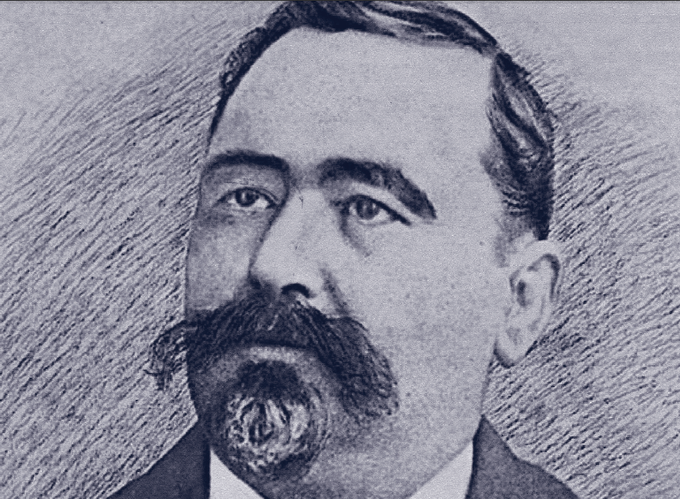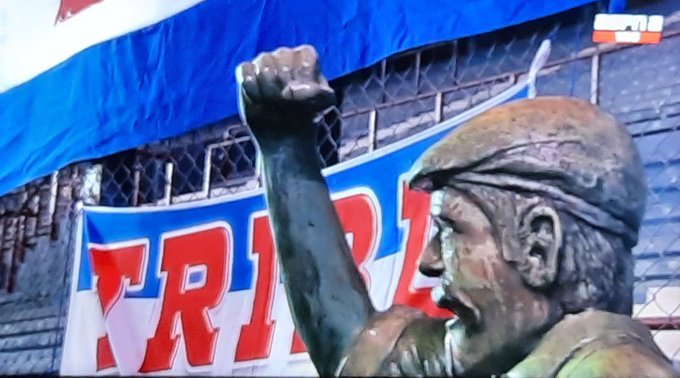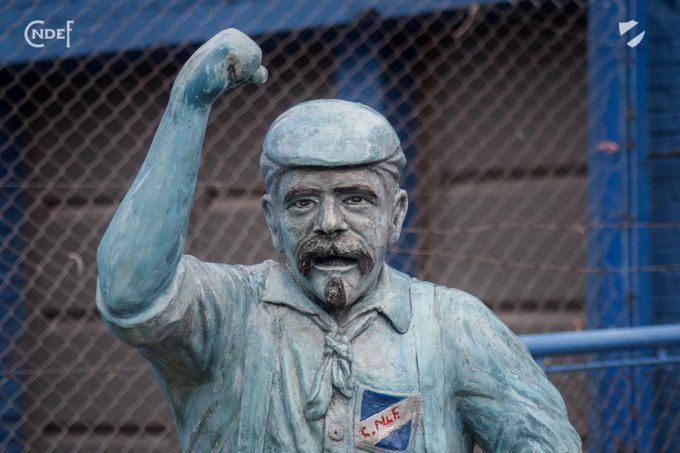Día del hincha (SPA-ENG)

Fanáticos, militantes, simpatizantes, seguidores, torcedores, tifosis, son algunos de los términos para identificar a los que alientan a sus equipos de fútbol favoritos, otras versiones más violentas o generadoras de disturbios y negocios sucios sería barras bravas, hooligans, ultras. Hay un término muy rioplatense que comenzó a utilizarse en los albores del fútbol profesional: "hincha" y esta es la historia de su inclusión en el vocabulario futbolístico mundial.
Entre la primera y la segunda década del siglo XX, el fútbol era considerado más un espectáculo que un deporte, ya he mencionado que durante muchos de aquellos primeros años y hasta entrada la década de 1940, los asistentes a los encuentros de los campeonatos en Argentina, hombres que por entonces eran los únicos que concurrían a los estadios, lo hacían vestidos de traje y corbata, con su correspondiente sombrero de ala. En Uruguay acontecía algo similar.
En esos tiempos las pelotas con las que se disputaban los partidos estaban hechas de cuero, cosidos totalmente a mano y adentro se les colocaba una vejiga de animal que debían ser infladas y selladas para que no perdieran el aire, luego el balón se cerraba con un tiento también confeccionado en cuero. Todo un arte reservado para pocos.

En Montevideo vivía un hombre llamado Miguel Prudencio Reyes Viola, de oficio talabartero. Este señor recibía los balones que le enviaba el Club Nacional de Montevideo para hacerles el mantenimiento y reparación, era muy bueno en su oficio y no pasó mucho tiempo hasta que el club lo contrató para esos menesteres en forma exclusiva y a tiempo completo.
Prudencio Reyes, era además un ferviente admirador del Club Nacional y por su condición de empleado asistía a los partidos que el mismo disputaba cada fin de semana y alentaba al equipo muy efusivamente, corriendo por el costado de la línea demarcatoria de uno de los laterales, donde se colocan los suplentes y el equipo técnico, realizando apasionados ademanes y gritos. Las personas en las tribunas lo observaban azorados y cuando alguien preguntaba quién era ese individuo, le respondían "es el hincha pelotas de Nacional". En el idioma coloquial denominado lunfardo propio de los habitantes de los arrabales de ambas márgenes del Río de la Plata, hinchar era sinónimo de inflar.
Con el paso del tiempo muchos espectadores se contagiaron de la efusividad de Prudencio Reyes y comenzaron a alentar a su querido equipo de la misma manera, con gestos y gritos, por lógica conclusión se los denominó hinchas o hinchada. De ese comportamiento atípico para aquel momento también nació otra acepción que por aquí es muy utilizada, se suele decir que una persona es un "hincha pelotas" cuando se lo considera molesto, insistente, cargoso o impertinente.

Seguramente Prudencio Reyes jamás imaginó que su conducta extrovertida en los partidos de fútbol desencadenaría en esos vocablos, definiciones y comportamientos, tampoco imaginó que el 28 de abril de cada año se celebrara el día del hincha en Uruguay, coincidentemente con su fecha de nacimiento.
Prudencio Reyes falleció en la ciudad de Montevideo en 1948 y una estatua recordándolo se encuentra colocada en el Parque Central de esa ciudad que al igual que muchas otras en el cono sur del continente Americano, respira y vive el fútbol de manera apasionada.
fan's day
Fanatics, militants, sympathizers, followers, twisters, and tifosi, are some of the terms to identify those who encourage their favorite soccer teams, other more violent versions or generators of disturbances and dirty business would be "barras bravas", "hooligans", "ultras". There is a citizen of Río de la Plata term that began to be used at the dawn of professional football: "hincha" and this is the story of its inclusion in the world football vocabulary.
Football was considered more of a spectacle than a sport between the first and second decades of the 20th century. I have already mentioned that during many of those first years and until the 1940s, those attending the championship matches in Argentina, men who at that time were the only ones who attended the stadiums, did so dressed in suits and ties, with their corresponding brimmed hats. Something similar happened in Uruguay.
In those times the balls with which the matches were played were made of leather, sewn entirely by hand and inside they were placed an animal bladder that had to be inflated and sealed so that they did not lose air, then the ball was closed with a Tiento also made of leather. An art reserved for a few.
In Montevideo, there lived a man named Miguel Prudencio Reyes Viola, a saddler by trade. This man received the balls that the National Club of Montevideo sent him to carry out maintenance and repair, he was very good at his job and it was not long until the club hired him for those duties exclusively and full-time.
Prudencio Reyes was also a fervent admirer of the National Club and as an employee he attended the matches that he played every weekend and encouraged the team very effusively, running along the boundary line of one of the sides, where the substitutes and the technical team stand, making passionate gestures and shouts. The people in the stands watched him in amazement and when someone asked who that individual was, they responded "he's the Nacional Club ball inflator." In the colloquial language called lunfardo, typical of the inhabitants of the suburbs on both sides of the Río de la Plata, "hinchar" was synonymous with inflating.
As time passed, many spectators became infected with Prudencio Reyes' effusiveness. They began to encourage their beloved team in the same way, with gestures and shouts, and by logical conclusion they were called fans. From this atypical behavior at that time another meaning was also born that is widely used here, it is usually said that a person is a "ball inflator" when he or she is considered annoying, insistent, burdensome, or impertinent.
Surely Prudencio Reyes never imagined that his extroverted behavior at soccer games would trigger those words, definitions, and behaviors, nor did he imagine that fan's day would be celebrated on April 28 of each year in Uruguay, coinciding with his date of birth.
Prudencio Reyes died in the city of Montevideo in 1948 and a statue commemorating him is placed in the Central Park of that city that, like many others in the southern cone of the American continent, breathes and lives soccer passionately.
Héctor Gugliermo
@hosgug
Un día dedicado a los que amamos y seguimos el deporte a nivel mundial, hinchamos todos por una misma causa, saludos
Así es @sadiel0102. Una linda anécdota de tantas que tenemos los que amamos los deportes.
https://inleo.io/threads/view/fulldeportes1/re-leothreads-2hs5v3q4c